Well, today was the day!
After a couple lackluster blog entries I knew this blog would be a long one to write.
After all, I went to Chernobyl today – site of the April 1986 nuclear meltdown.
To put into context how big a disaster this was – this meltdown was 200 times larger than Hiroshima and Nagasaki put together.
In the end, out of 96 different villages and cities in the area, all but three ended up buried in decontamination efforts.
Thousands were evacuated, told they were only going away temporarily to later find out they could never return to their homes.
What most people don’t know, however, is that there was frantic work going on after the event to prevent an imminent second reaction that would have been 1000 times as powerful and would have pretty much wiped out most of Europe.
The work to contain the accident took over 2 years and 600,000 people brought in from all over the former USSR.
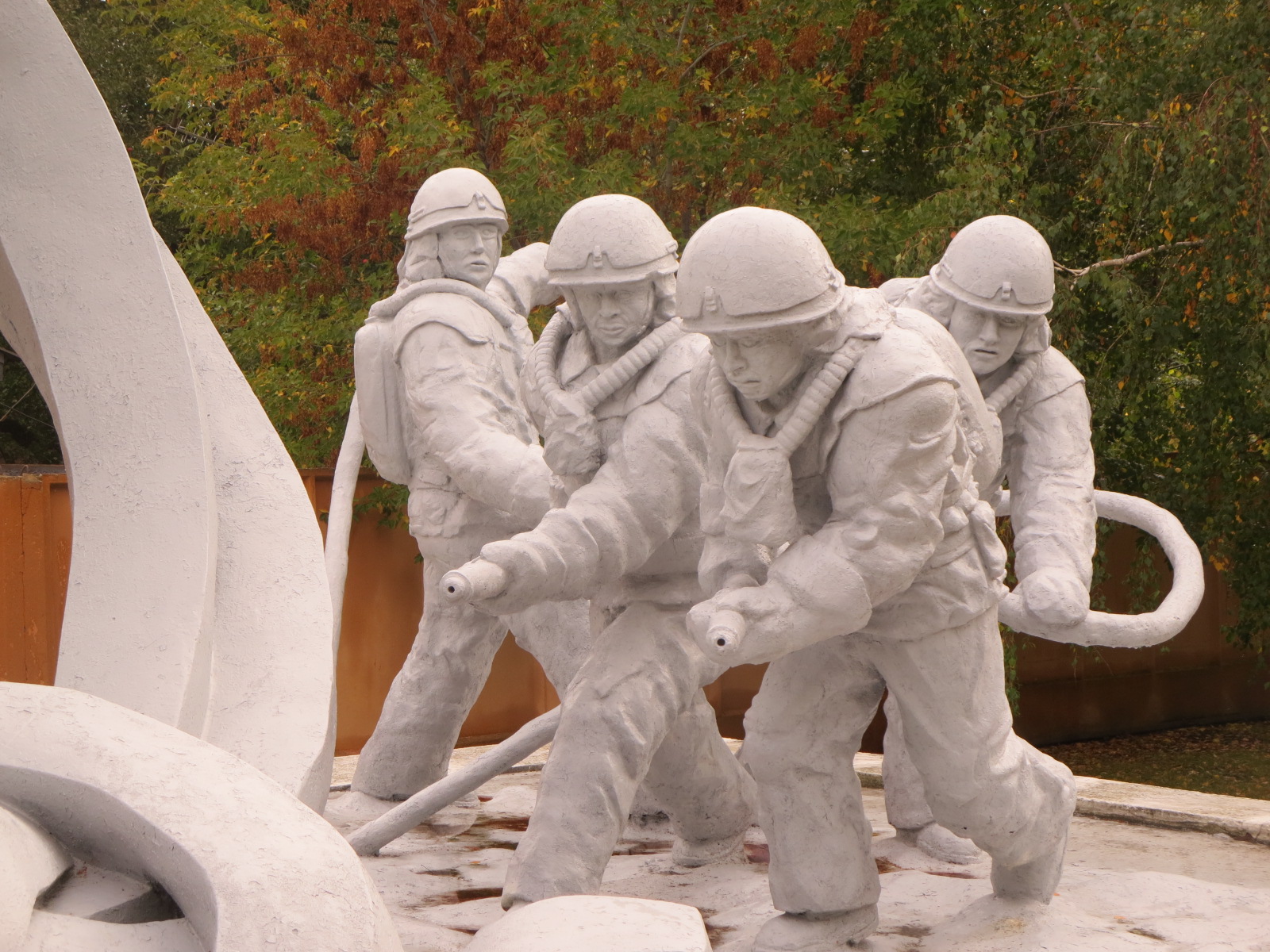
Why so many people? Well, most of these people were called liquidators and their job was to go out to help clean the mess. Problem was they could only be exposed for a minute as during that time they’d have been exposed to as much radiation as people are their whole life.
So, they would go there, work for a minute, and live with the consequences afterwards.
600,000 people!
There were so many stories we were told today it’s hard to express them all here.
I did write a few notes along the way and of course I took alot of photos (find the photo link above) so I’ll just kind of go through those and recount the day…
So, my day started bright and early as I woke up at 6:30am, took the subway to the mail railway station where I was to board my bus going to the exclusion zone.
Naturally I was lost for a bit but then remembered I had purchased a Ukrainian sim card and could access the internet and use GPS to point me to the right direction.
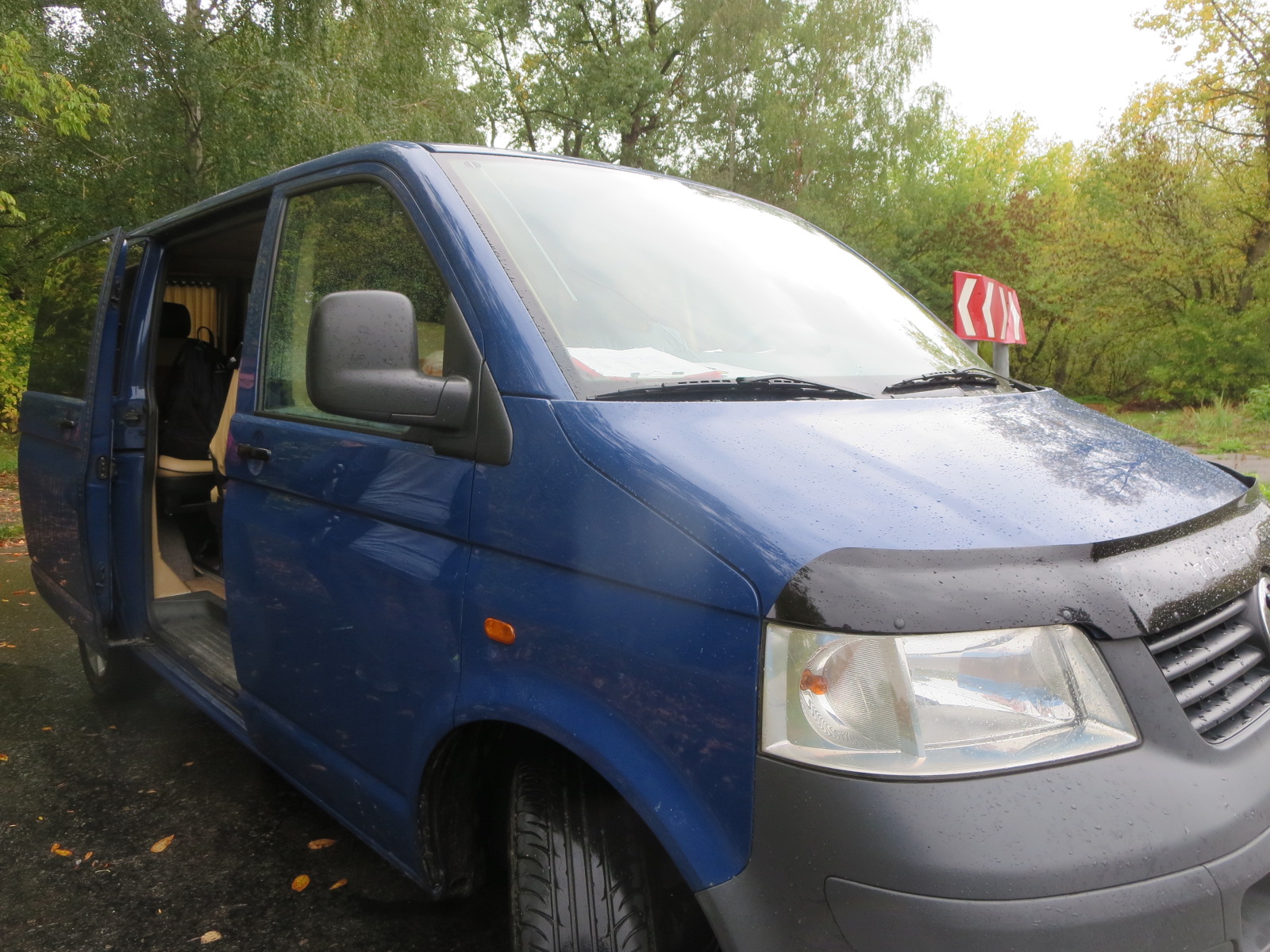
Just before 8am I arrived at the minibus (well, really a van) that would be taking us on our 2 hour trip to the exclusion zone.
Along with our driver and Helen, our tour guide, there were a couple from Vancouver (I know, what are the odds?), a man from Poland and 2 guys from Finland.
Everyone spoke English and everyone was friendly so we were off to a good start.
For tours to Chernobyl they require that you wear long sleeve shirts and pants to cover up. Now, I don’t think this was actually necessary as the levels of radiation there right now are quite low but I bundled up anyway.
Thankfully after a couple of days of 28 degree sunny weather we had a cloudy 19 degree day today.
Also, I lucked out with the day I booked the tour as we were told between the 5 tour groups operating they had 500 people do the tour yesterday while today there were only 50.
Sweet! No endless amount of tourists getting in the way of my damn photos!
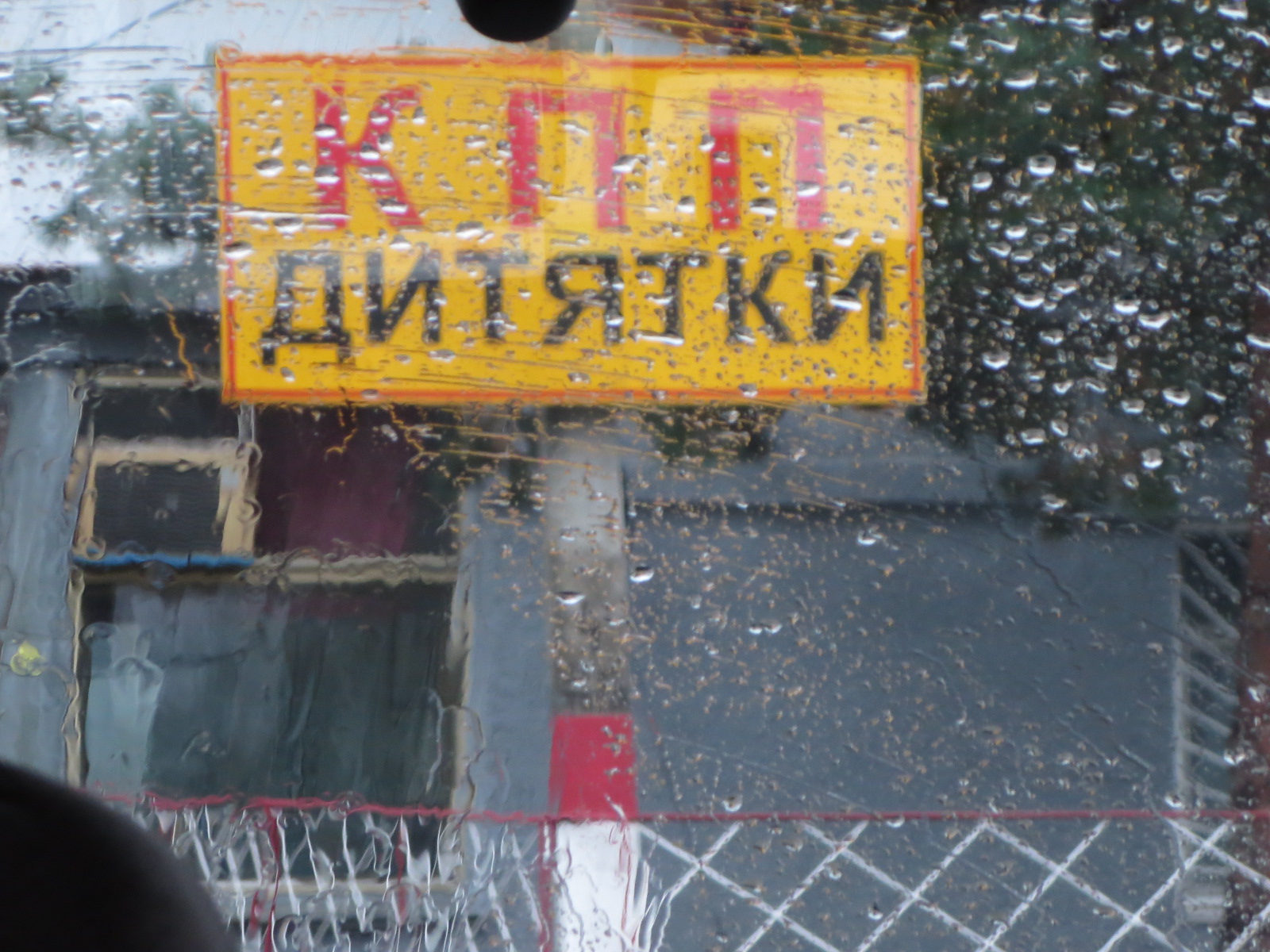
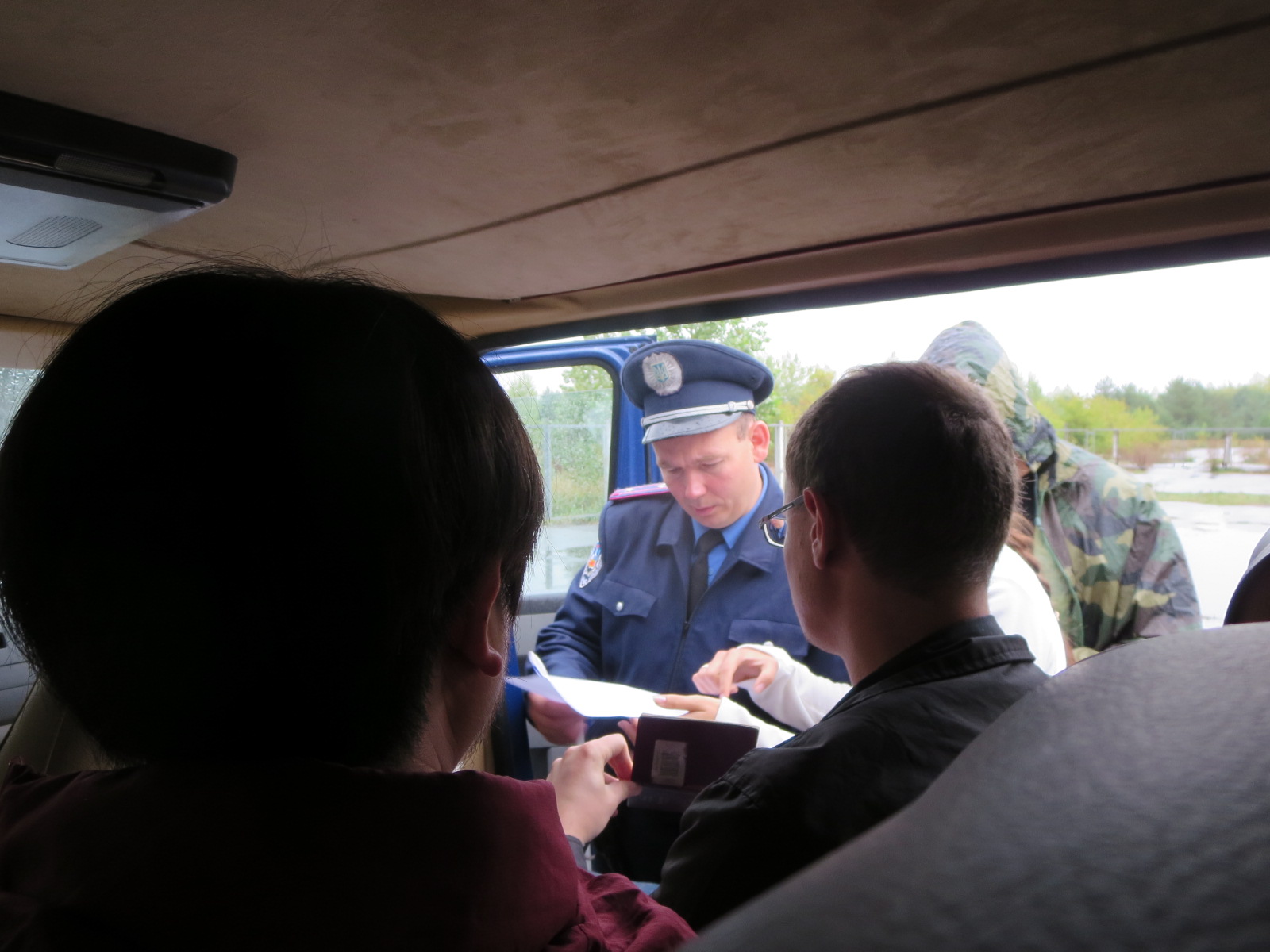

After driving for two hours we reached the border of the exclusion zone. There are actually two military checkpoints. The first one you reach is at the 30km exclusion zone and there is a second one for the 10km exclusion zone.
So, the entire zone which is a 30km circle around the plant covers 2600 square kilometers.
The 10km zone is obviously the most severe area. To put it in perspective – the area in that zone won’t be inhabitable for 48,000 years while outside that zone in the 30km area will be habitable again in only 60 years.
Before we actually hit the nuclear power plant area we drove through a handful of different abandoned towns.




Abandoned building after building. All in disrepair with rusted metals and pealing paint on the walls.
All the furniture has been taken out of the buildings and put into storage to prevent looting. There’s also glass scattered all over the floors as the aluminum frames holding the windows in place had long been taken for scrap (these could be decontaminated).
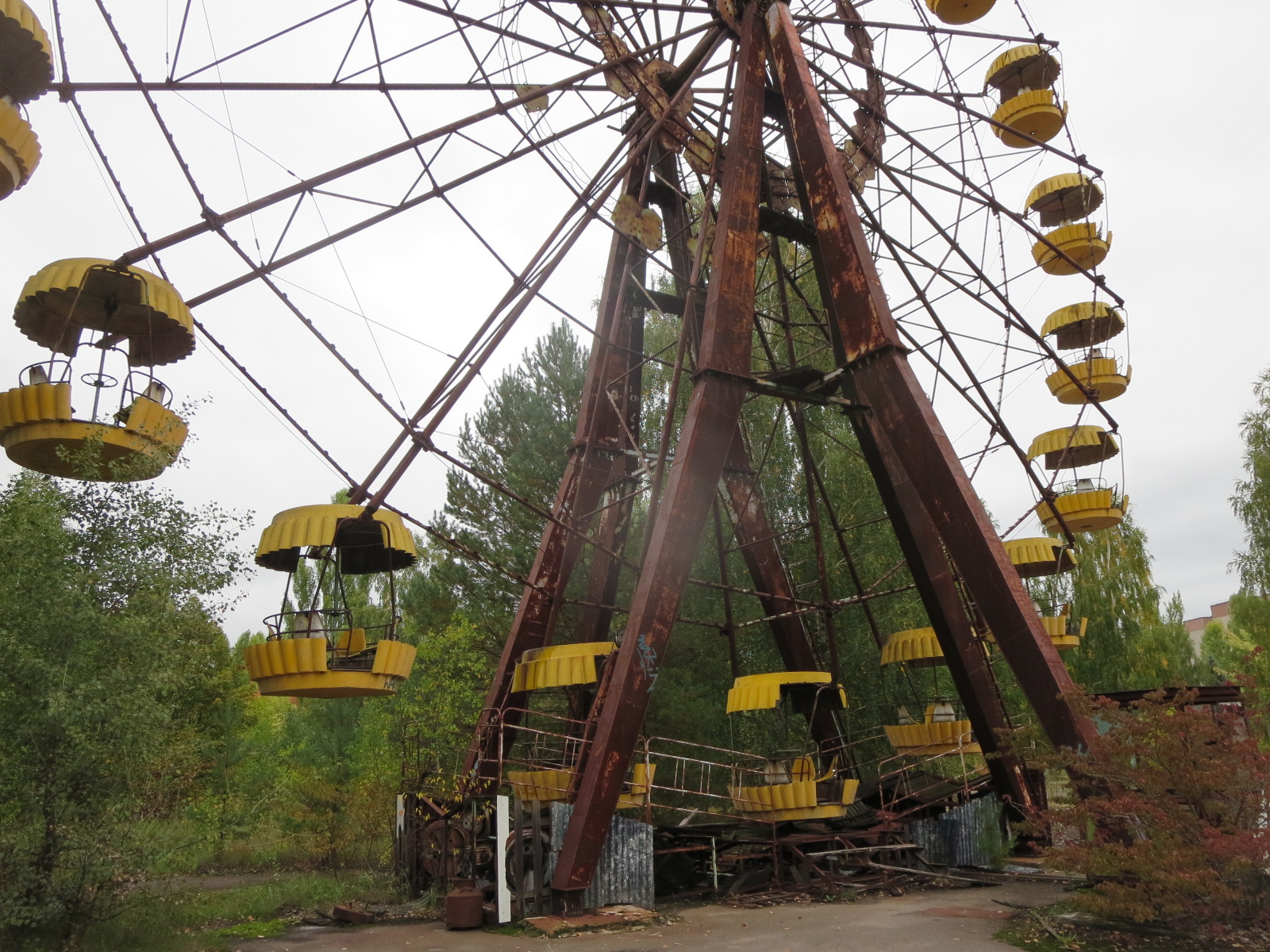
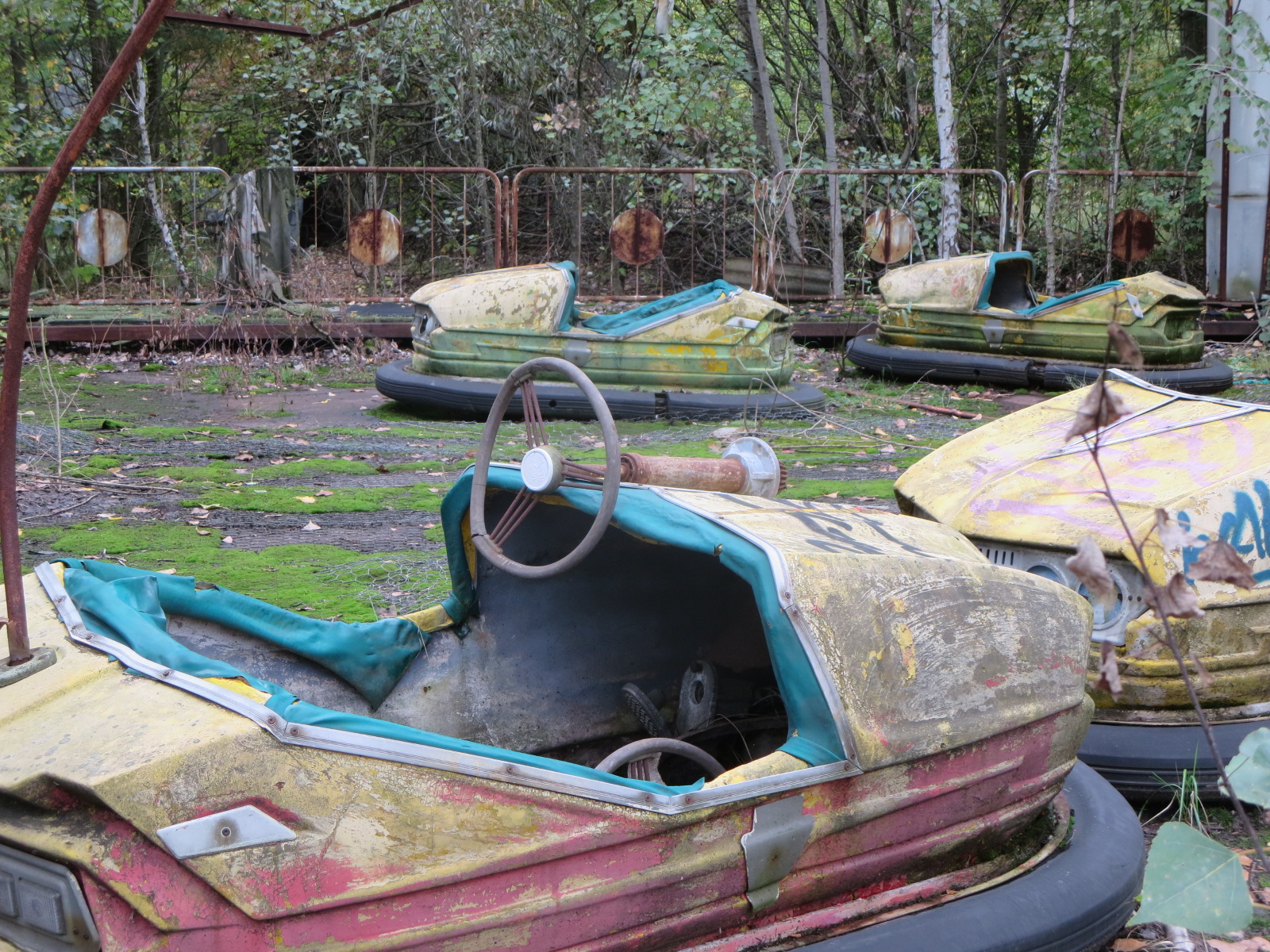
We also saw an amusement park in disrepair that had never actually opened as they were waiting for labour day to open it.
It was eerie to see a perfectly good ferris wheel (well, except for a ton of rust) that had never been used.
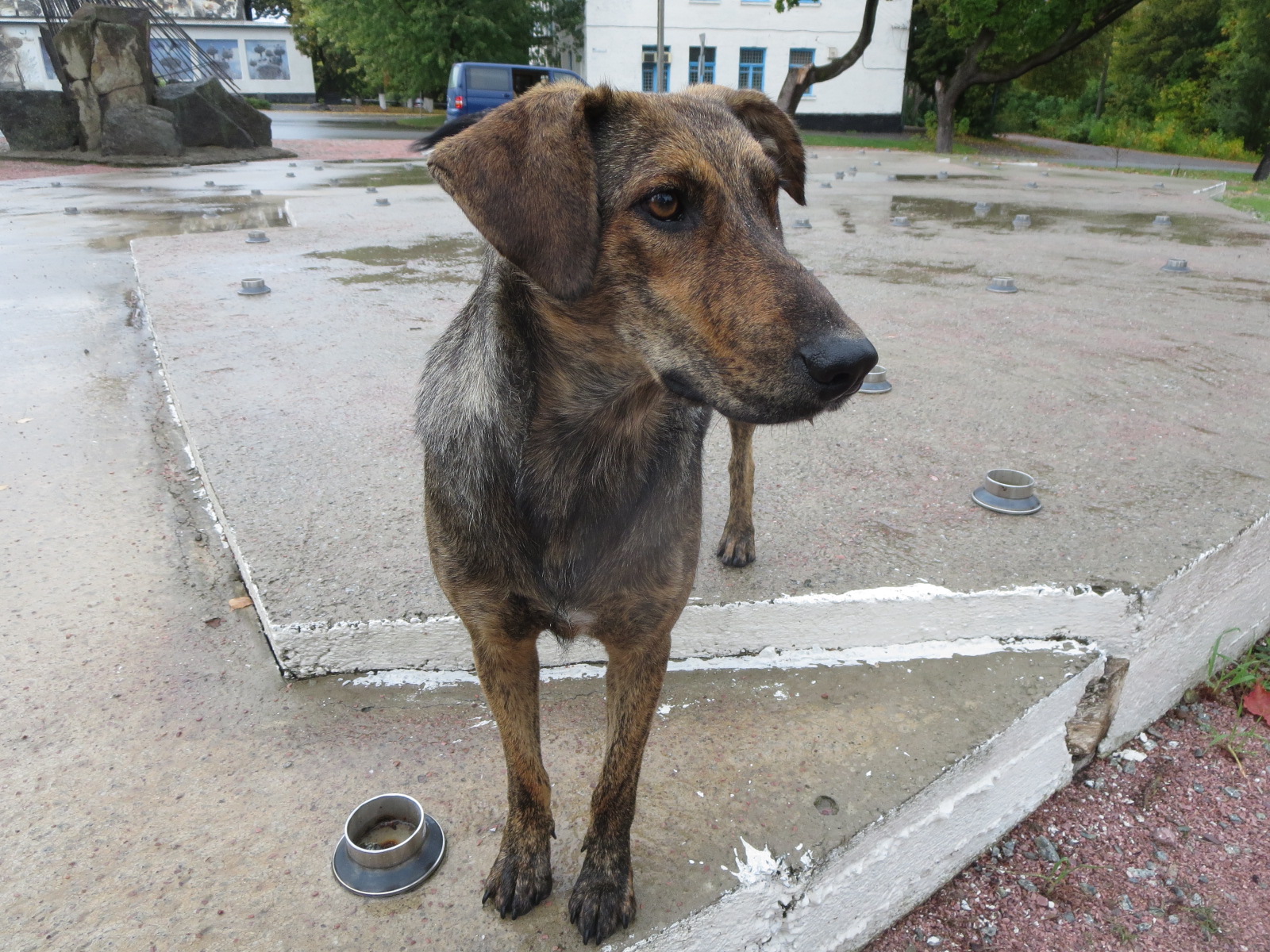
Along the way we also saw a handful of stray dogs who were actually looking pretty healthy as they knew where the tourists and their food would be.
And wild mushrooms and apple trees. Of course none of this edible.
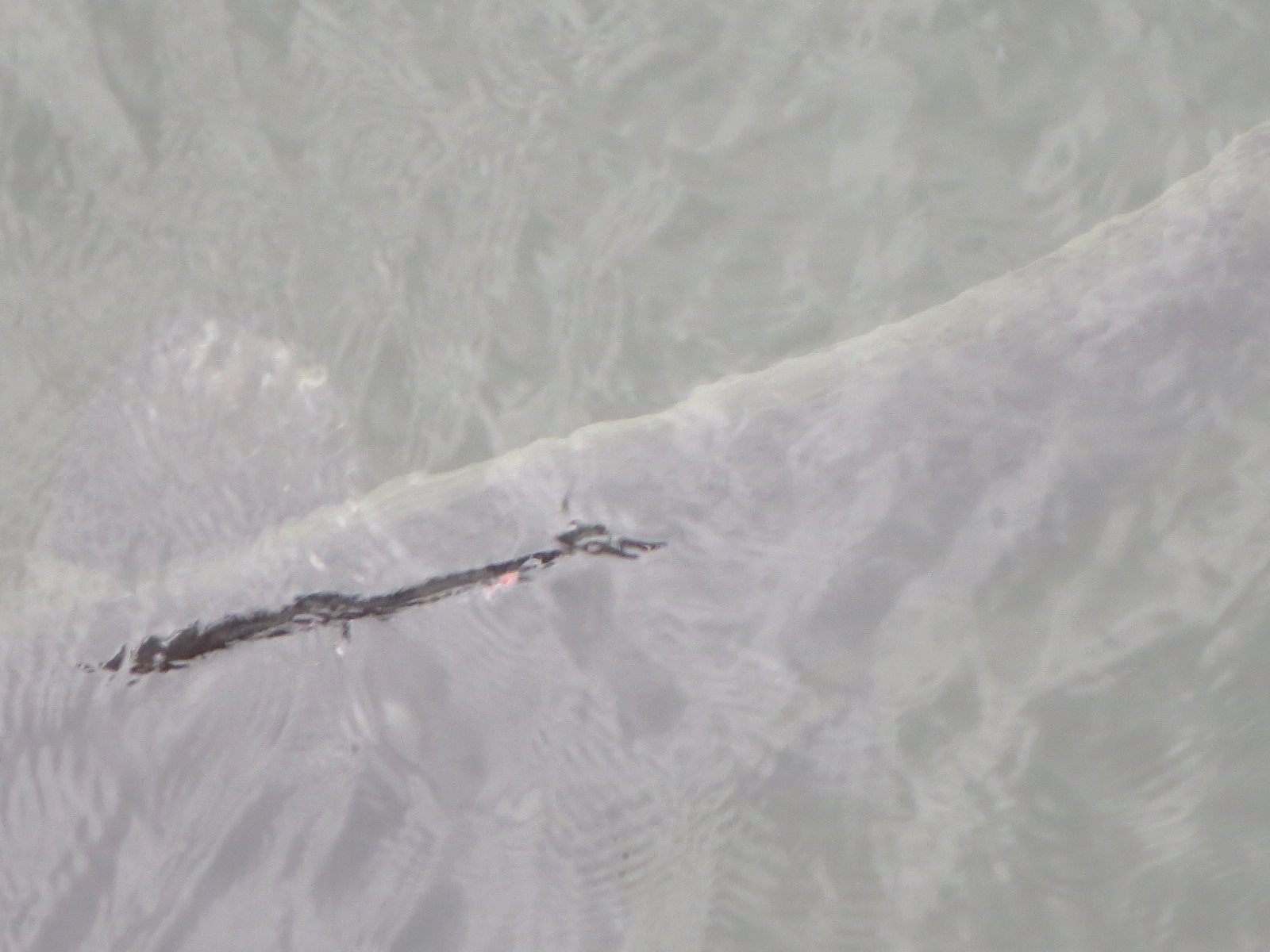
Oh, and we stopped at a river where there were carpfish who were 30 times as large as regular fish. Since there were no natural predators they’ve actually lived a good long live getting fed by curious tourists throwing bread from the railway bridge that crossed over the river.
Before we stopped at the nuclear plant area we stopped at another location known as Chernobyl 2.
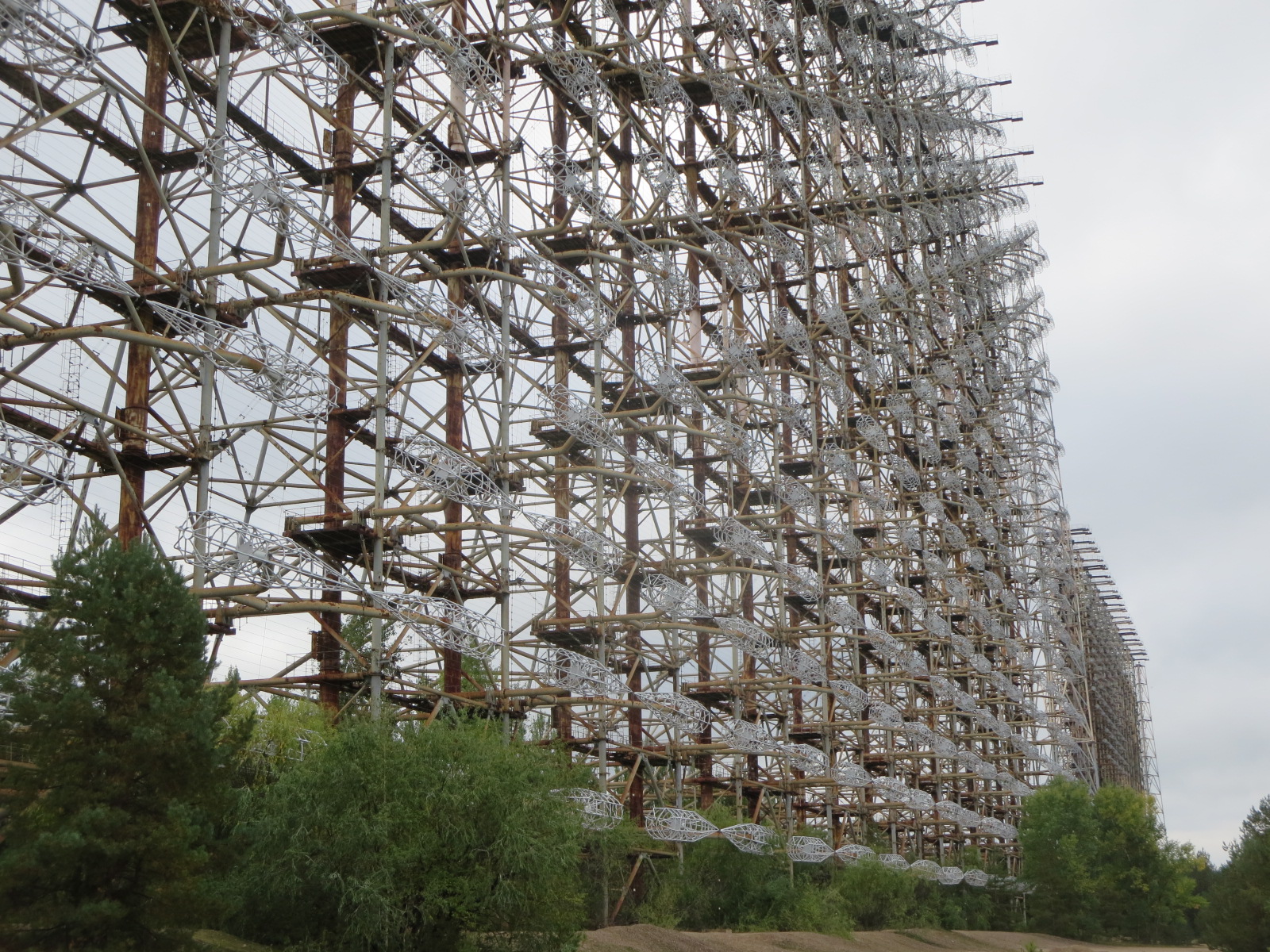
This formerly top secret area wasn’t actually opened to the public until last year. It houses what is now a defunct missile defense system 750m long and 150m high. Back in the cold war it was used to detect erratic radio signals which signaled missiles that had been launched.
The apparatus was stunningly huge and impressive. You sometimes forget how this area was the former Soviet Union and how just 40 years ago we were all terrified of it.
Anyway, onto the plant…
The nuclear power plant was actually 4 different plants with a 5th and 6th one in the process of being built when the meltdown occurred.

As you enter the area you can actually see the now rusted cranes still in place at the 5th plant as they were abandoned 30 years ago.
It was the 4th plant that was what we were looking for though as that’s the one that had the meltdown.

We were actually able to drive right to the outside of the plant maybe a couple hundred meters away.
It is currently contained in a sarcophagus which is basically like a tomb that encases all the bad stuff. That sarcophagus, however, was only meant to last 30 years and they’ve been frantically working on a new sarcophagus to replace it.
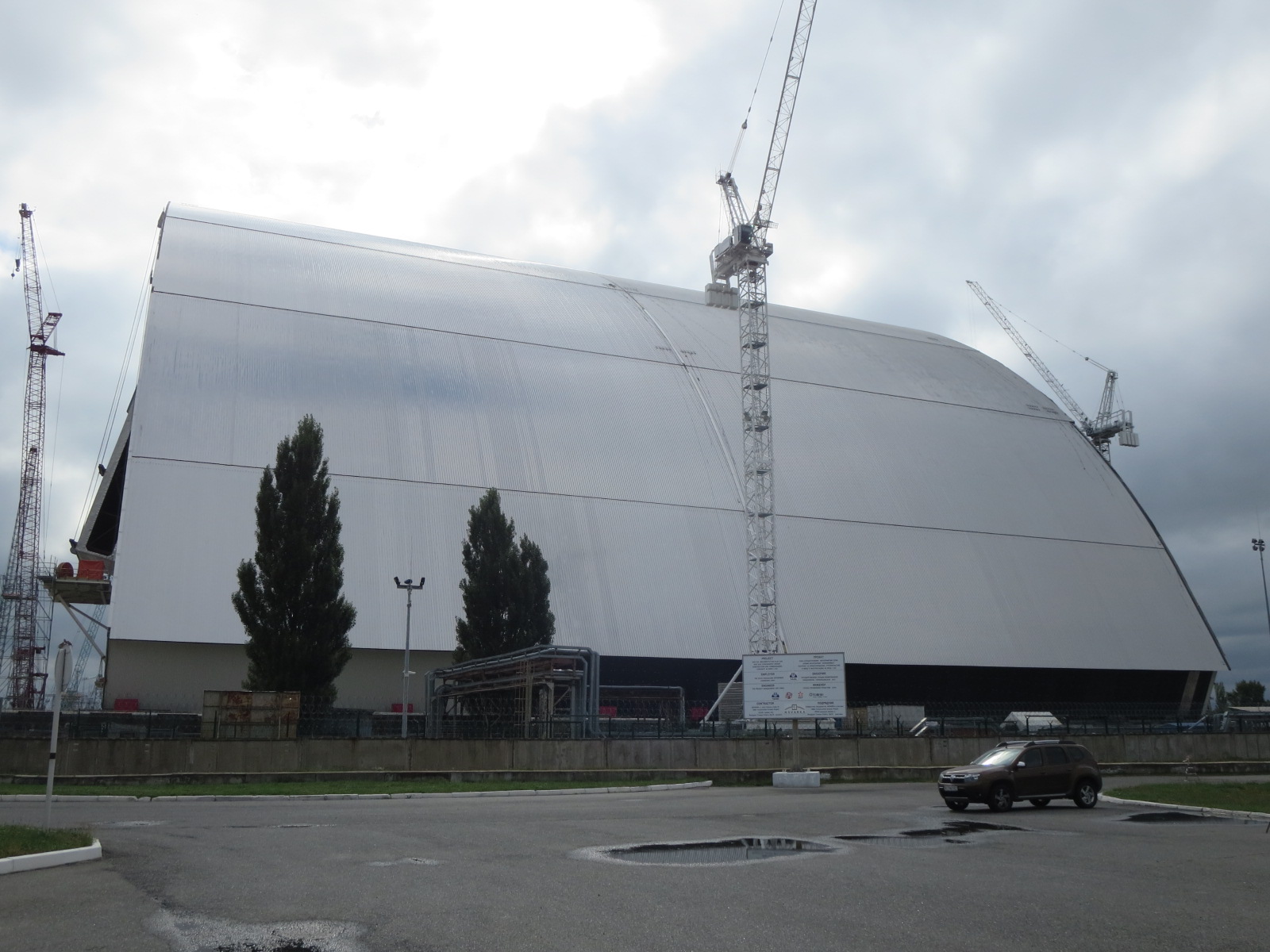
This new sarcophagus, which will last 100 years, is being built right next to the plant at a cost of 2 billion dollars with 45 different nations around the world chipping in. When it’s prepared in 2017, the entire massive structure will be wheeled over top the old sarcophagus and replace it.
By the way, the 2 billion dollars is on top of the already 1.8 billion dollars spent by the former USSR in the eighties to contain the initial accident. It was actually this money spent that eventually led to the collapse of the Soviet Union.
Other stuff we learned was that because of the big USSR propoganda machine and the fact they didn’t want to show weakness to the western world alot of disinformation was passed in the early days.
People in the immediate area weren’t told of the seriousness of the event and weren’t evacuated until 2 days after the meltdown.
In fact, the planned May Day celebrations occurring the following week took place as well. Interestingly, all footage and archives of that event are nowhere to be found.
So much information flowed today it was amazing albeit a little hard to maintain in my little brain.
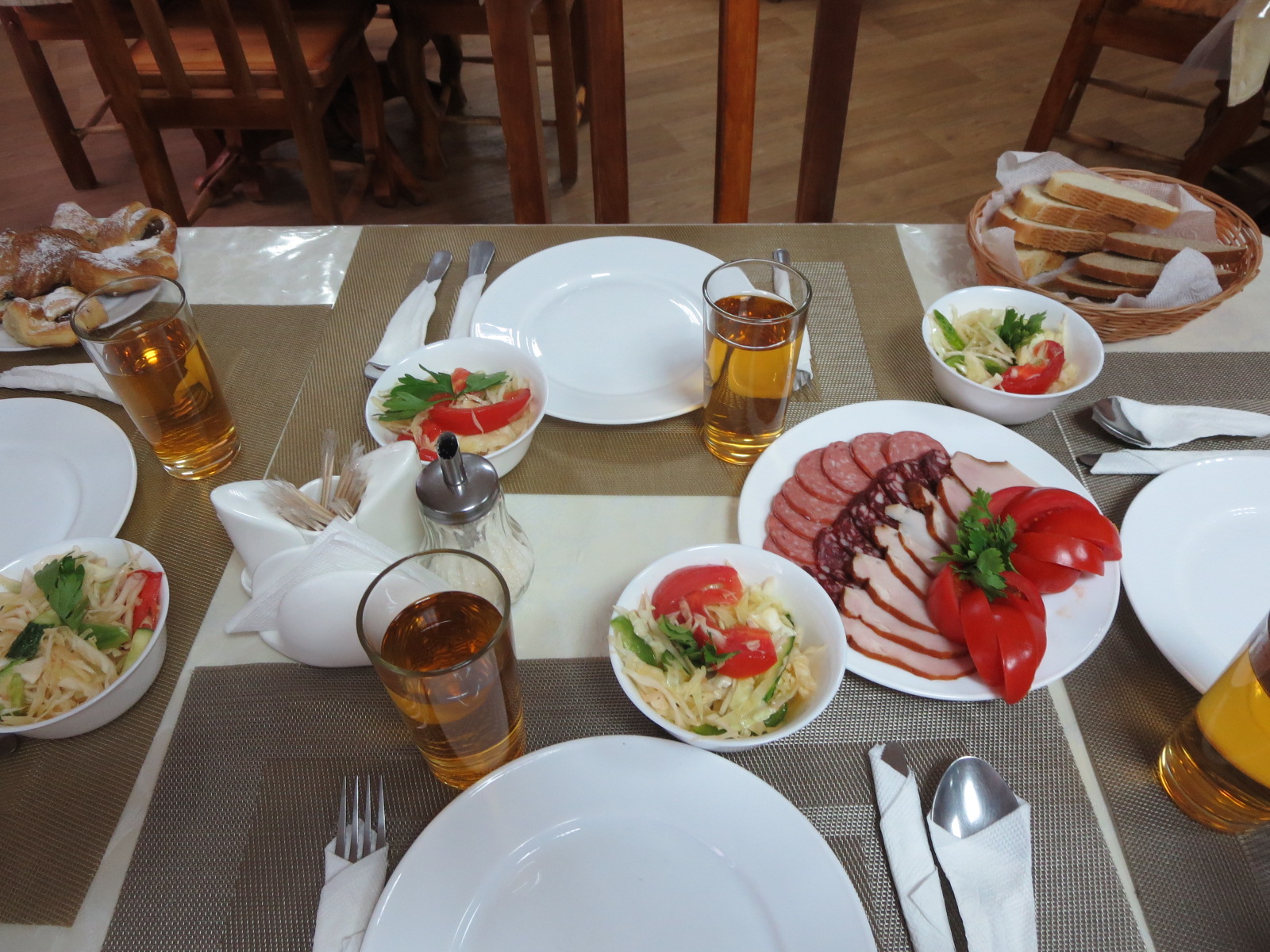


At 5pm we stopped for dinner at one of only two hotels in the area. Obviously all the food had been brought in from outside the exclusion area.
For dinner we started with a meat plate and bread to share and then soup and salad before an entree of pork with potatoes and corn. And of course, there was dessert.
After dinner we drove for 2 hours back to Kiev and a half hour later I was walking in my hostel.
And here we are, my blog is done. In all it took me about 2 hours to write and I hope you enjoyed it…

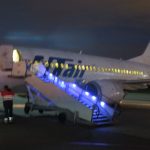

1 Comment
cool! i desperately wanted to go there when i was in ukraine in ’04 but couldn’t swing it.